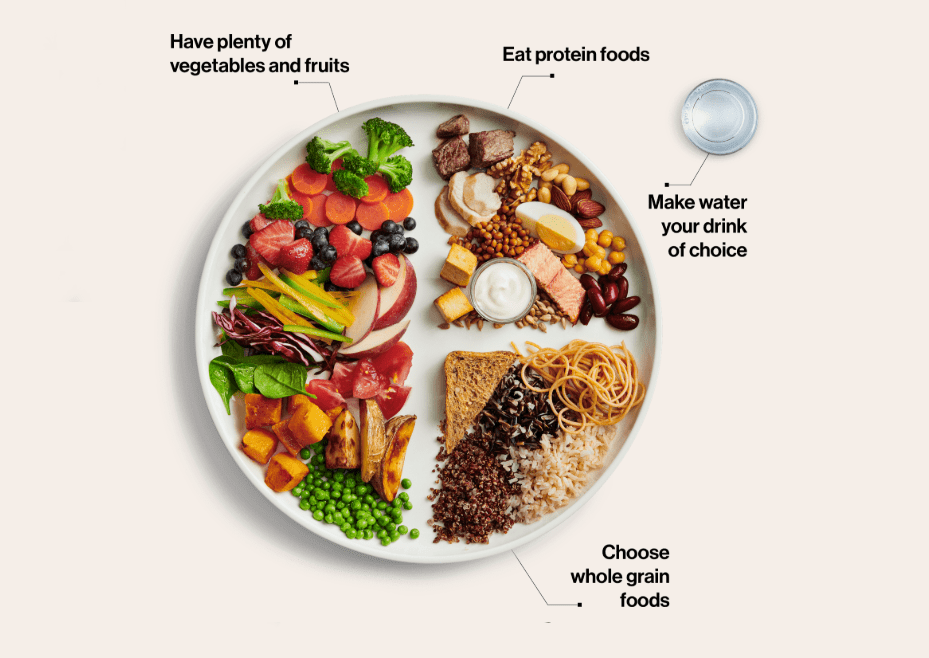Canada’s Food Guide: More plant-based proteins, less sugar, less dairy and social eating habits
How the guidelines for how Canadians should eat have changed and how this could affect you

The 2019 Canada’s Food Guide was released Tuesday morning. The new recommendations push meat and sugar to the side and encourage lots of fruit and vegetables. It encourages people to drink water instead of juices, alcohol or dairy products. The style of the recommendations changes too with the new guidelines being represented by a plate half filled with fruits and vegetables with whole grains and protein each being given a quarter of the plate.
The new recommendations come after extensive consultation and are backed up by the latest, science-based evidence about what to eat and what to leave out of your diet. It’s a major update to the previous guidelines that date back all the way to 2007 and included estimates on how many servings of different foods you should be getting.
“We did a fair amount of research when evaluating the past food guide, and what we heard from Canadians was that is was very difficult and too complicated to deal with recommendations about a particular number of portions of a particular size,” Hasan Hutchinson, the director general of the office of nutrition policy and promotion at Health Canada.
No more traditional food groups
The most notable change is a move away from the four main food groups to a diet that separates your plate into three main categories: whole grains, vegetables and protein.
The new guidelines suggest whole grains such as quinoa, rice and pasta should take up one-quarter of your diet while proteins, preferably from plant-based sources such as beans, tofu and lentils, take up another quarter of your diet. Plant-based proteins are preferred because they come with increased fibre intake and reduce the consumption of processed meats and saturated fats that are associated with a greater risk of cardiovascular diseases, colon cancer and type 2 diabetes.
Water is the beverage of choice according to the guidelines. Pop, flavoured milk, and juice have been identified as the number one source of sugar for kids and are strong contributors to Type 2 diabetes and obesity in children.
Finally, the guidelines say half of the foods you eat should be fruits and vegetables. Gone, despite the strong opposition of the dairy industry, is the ‘milk and alternatives’ food group.
“The bottom line is that what we’ve done is to base our recommendations on solid, scientific evidence. That’s it. That’s what drives us,” Hutchinson explained. “We made a strong commitment to not meet or be influenced by industry or (use) reports funded by industry.”
Eat together
Those recommendations aren’t a surprise. Consumers have been warned against the danger of added sugars and the environmental implications of meat consumption for several years. What’s particularly interesting is that the guide not only recommends what to eat, but how to eat. The new food guide recommends Canadians eat together, eat mindfully, cook more often and also take time to enjoy their food.
Health Canada’s five tips for healthy food choices
1) Eat plenty of vegetables, fruits, whole grain foods and proteins that come from mostly plants
– Eliminate foods high in saturated fat, like meat and cheese, in favour of foods high in unsafurated fat like avocados and peanut butter
2) Limit processed foods and prepare your meals and snacks with ingredients that contain little or no added sodium, sugar or saturated fat
– Choose healthy meal options when eating out
3) Drink lots of water
– Replace sugary drinks with water
4) Look at food labels
– Know what the products you buy contain and compare them with the alternatives
5) Be conscious that food marketing can influence your dietary choices
– Many foods that are heavily marketed contain too much sodium, sugars or saturated fat for healthy eating patterns

